Let’s look at the life of the blue French Bulldog today. Is there such a thing as a Blue dog? You’ll find that out and more.
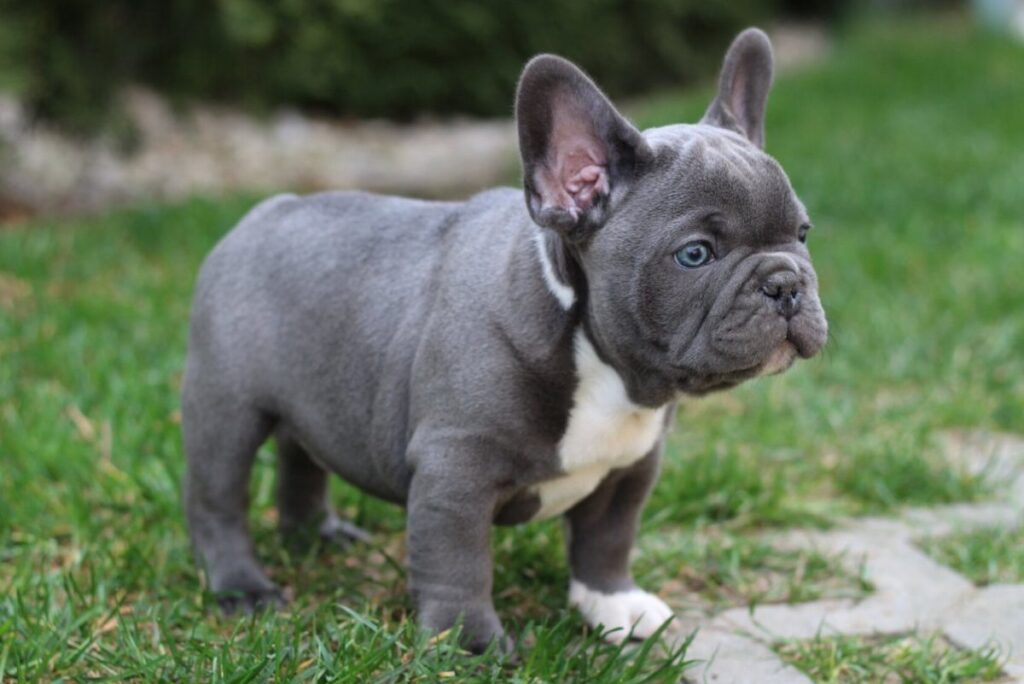
What Is A French Bulldog?
The blue French is among the families of the French bulldog. Yeah, if you trace the genealogy of French bulldogs, you will find the blue ones among them (haha).
They have a characteristic blue-grey coat. Yes, they are not outrightly blue. If they were, you should begin investigating the possibility of “avatar dogs”.
They are originally black, but the underneath blue colour you can see is a result of the dilution of the colour. So, instead of black, you have grey or blue-grey.
They are easily identifiable with their short, muscular build and bat-like ears. They are perfect for family settings because of their non-threatening look.
Apart from that, blue French bulldogs have a friendly and affectionate temperament. In the home, they can relate with the kids easily and “funnily” understand human language if taught.
Blue French bulldogs are good learners. Training them to be good pets shouldn’t be that hard.
The blue French bulldog goes by many nicknames, such as Frenchie, Frenchy, Blue Frenchie, Blue Frenchy, and so on. It’s your choice. (Although Frenchie and Frenchy seem a little bold since they aren’t the only French bulldogs).
What Makes A Blue Frenchie Blue?
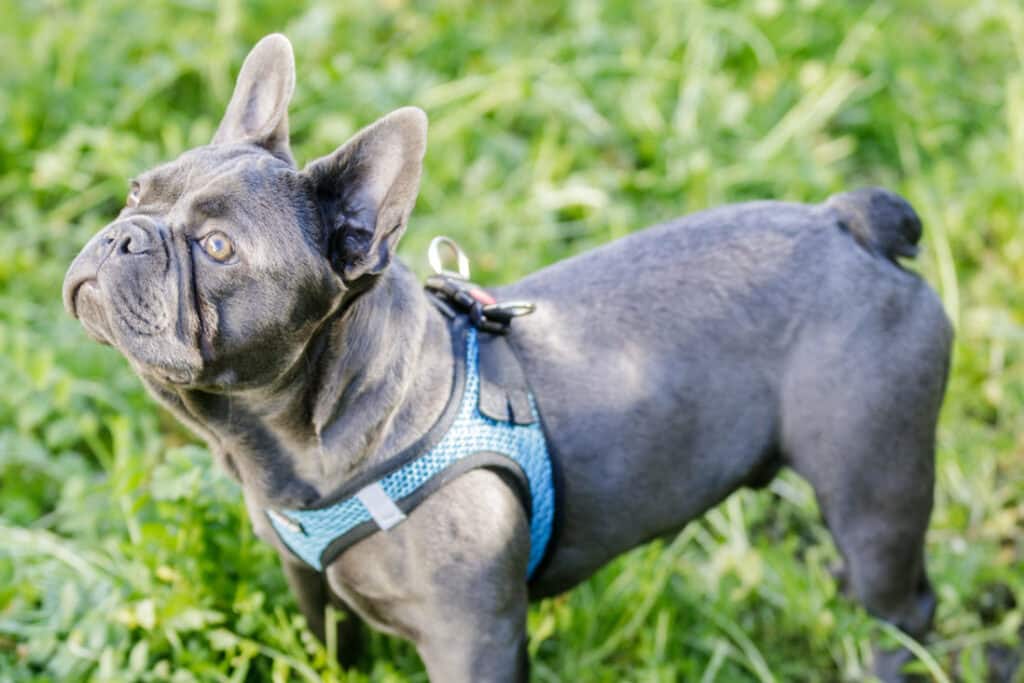
The genetic variation affecting the pigmentation of the skin coat is what gave birth to the “blue” in blue Frenchies.
Therefore, we have a more blue-grey or blue-black colouration rather than pure black.
This dilution of the black colour is caused by a recessive gene called the “d” allele, which affects the expression of the black coat colour by diluting it to a bluish-grey shade.
The specific genetic combination that results in the blue colour is often referred to as “dd” (dilute gene in a homozygous form).
When both parents carry this dilute gene, there is a chance that their offspring will inherit it, leading to a blue coat colour.
The colours of dogs, not just blue French bulldogs, are of growing importance. Hence, more people try to breed dogs for the sake of colour and disregard other defining factors.
Breeding of dogs shouldn’t be for colour sake alone. Health concerns are also important.
Unethical breeding practices can lead to various health issues and should be avoided.
There are different types of blue Frenchie. Let’s look at that.
Read: Merle French Bulldog: All you Need to Know
Blue Frenchie Types
Based on skin colour, there are different types of Blue Frenchie. The only common is they all have a blue feel.
The types listed here are the ones that presently exist. Through cultured, controlled, and ethical breeding, you can get more blue Frenchie types.
1. Blue-Fawn French Bulldog
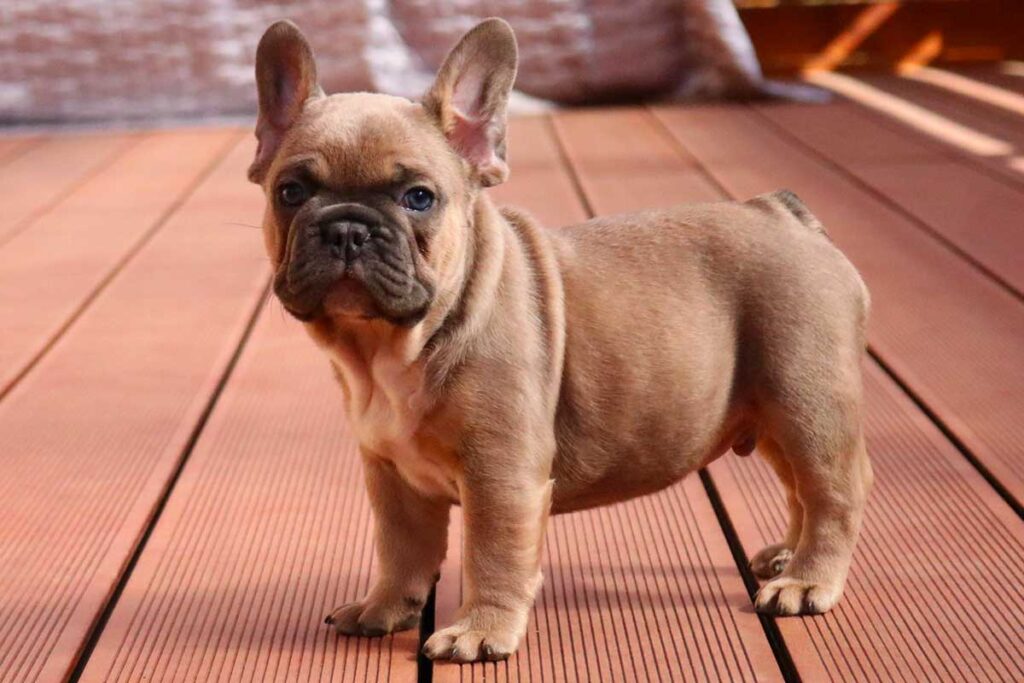
The blue-fawn bulldog bears a noticeable similarity with the blue French bulldog. They are similar in terms of size, ears, and the face.
The blue fawn bulldog has a light underbelly. It has a blue coat with a fawn-coloured undercoat, giving the dog a blue-grey appearance.
2. Blue Brindle French Bulldog
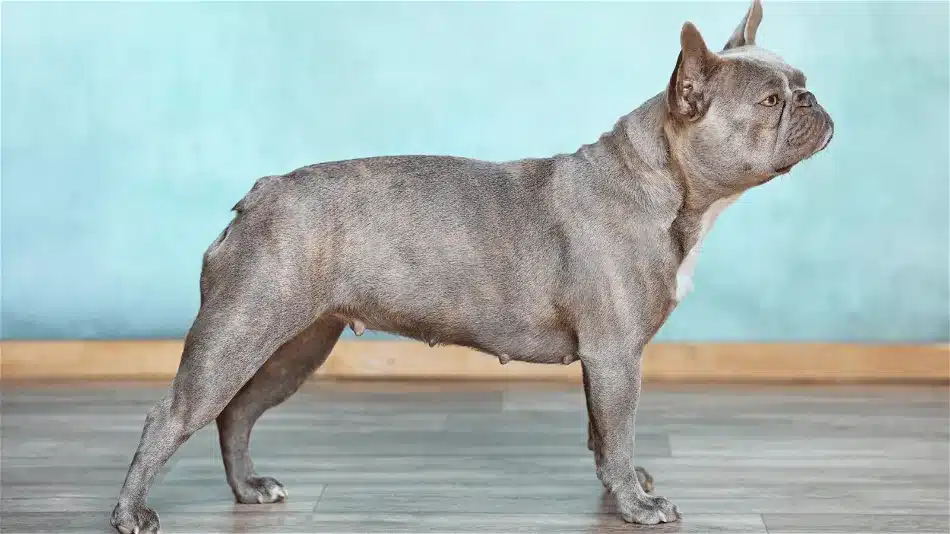
The blue-brindle French bulldog has a mixture of dark and white hairs. This mixture dampens the white giving the dog a more calm-grayish colour.
Below the greyish pattern lies a soft blue hue that reminds you of the brindle’s ties to the blue French bulldog’s family.
3. Dark Blue French Bulldog
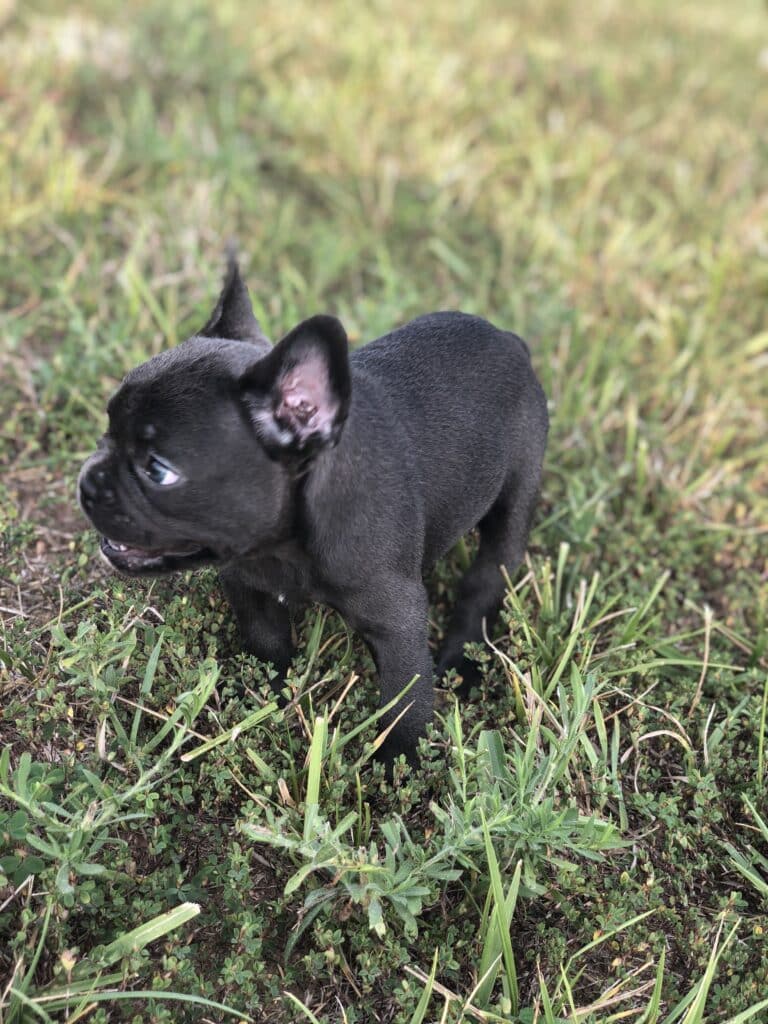
Just like the colour, you can almost lose the blue in dark blue if you are not careful. The dark blue French bulldog carries a coat that has a deeper shade of blue.
Almost black.
4. Silver Blue French Bulldog
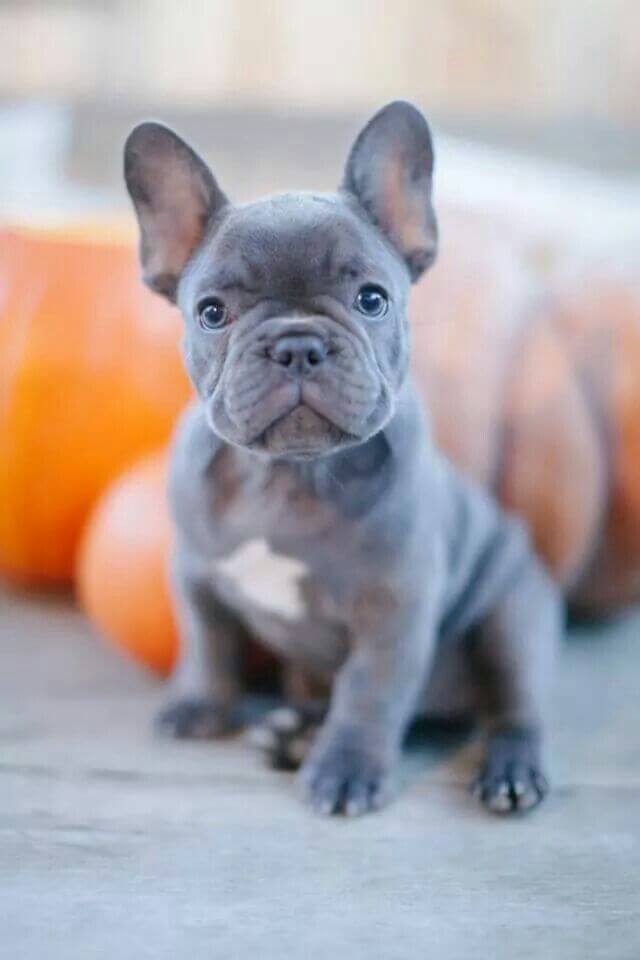
Here, the dogs have a lighter shade of blue. It’s not outrightly blue, but just imagine a silver colour with a soft blue colour pushing through.
It’s the opposite of the dark blue French bulldog.
5. Steel Blue French Bulldog
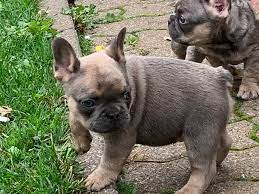
The steel blue Frenchie is like most blue French bulldogs. They have a uniform appearance throughout and exude a blue appearance.
These are types of blue Frenchies. Are you unsatisfied with the limited types? You can do more ethically breeding more blue French bulldogs.
What are some of the characteristics of blue French bulldogs?
Check: Dapple Dachshund: Everything You Need to Know
Characteristics Of Blue French Bulldogs
Number one, they have a characteristic blue colour. That’s a given, right?
That would be everyone’s number one answer back in secondary school days. Let’s go deeper and figure out more about these dogs.
1. Small Size
Small? Well, they are small, but not that small. You can call them compact instead. Figure out more synonyms on your own.
They usually have a small muscular build and weigh about 16-28 pounds. That’s a lot of pounds for such a size.
2. Smooth Coat
Unlike other breeds like Caucasians, blue French bulldogs have a short, smooth coat that you can easily care for.
Their coat will remain in good condition as long as you care for it through regular grooming, e.g. brushing.
4. Distinct Appearance
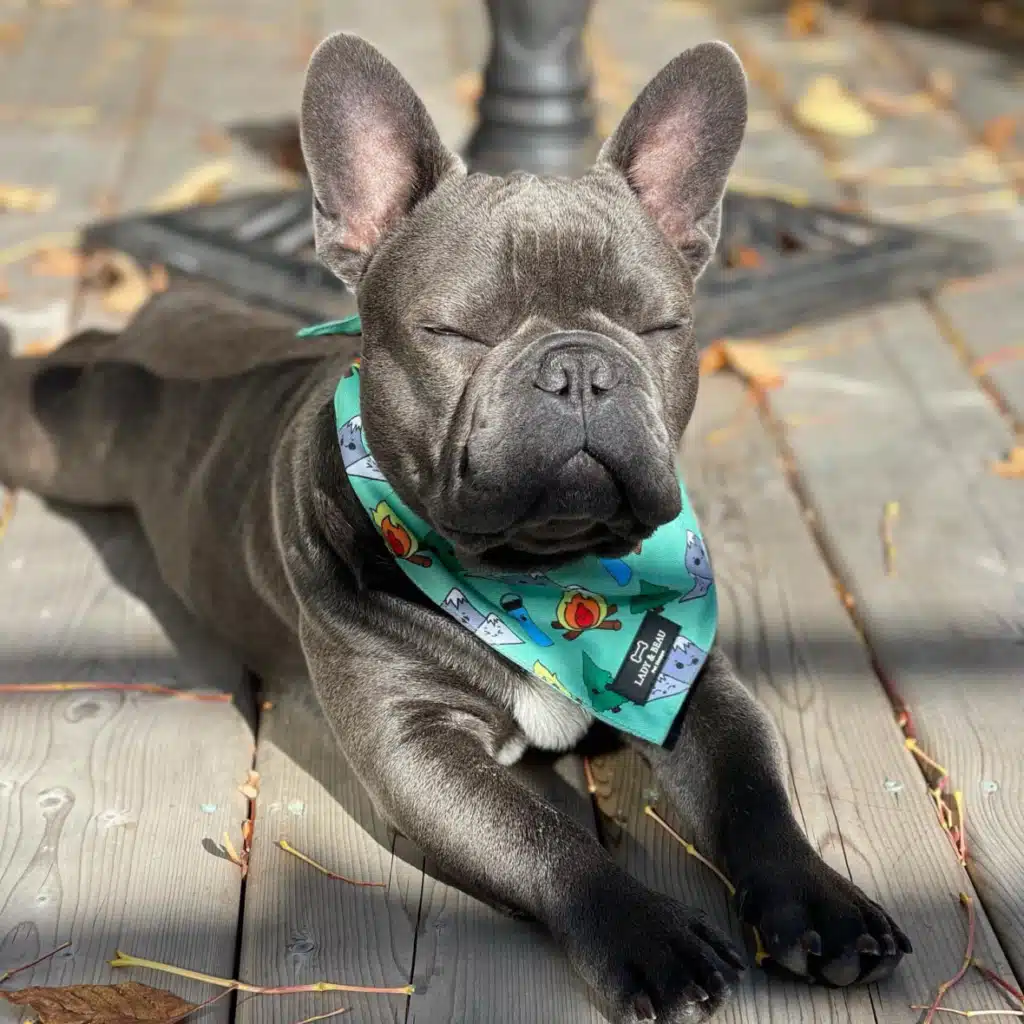
They have a unique appearance you can’t mistake with any other dog breed. How do you identify them apart from their colour?
They have a square-shaped head, bat-like ears and a sturdy body, short and gallant. The blue colour is their most defining feature.
5. Blue Coat Color
Need I say more? The diluted black colour of the blue French bulldog gives it a blue-black colouration.
The bluish-grey coat colour results from the dilution of the black coat colour due to the presence of the dilute gene (dd).
6. Friendly Temperament
Blue Frenchies are known for their heartwarming, friendly, accommodating and affectionate character. In the home, they have a way of becoming a tight part of the family.
They often form strong bonds with their owners and enjoy being part of the family.
7. Adaptable
Do you want a dog that won’t stress you, understands your mood, and is highly intuitive? Look no further than the blue French bulldog.
They are very adaptable and can survive in different living conditions. They don’t require excessive exercise but do enjoy short walks and playtime.
8. Good with Families
They make excellent family pets and are good with children. Blue French bulldogs learn quickly and are keenly empathic. Their emotional intelligence would shock you.
Their sociable nature makes them well-suited for households with various family members.
7. Unique Vocalizations
French Bulldogs have a distinctive set of vocalizations, including a unique “bat ear” sound. They may snort, grunt, and make other amusing noises, adding to their charm.
These and more are very lovable characters of blue French bulldogs. They’ve earned their reputation by just being “bluey”.
Nah, I’m kidding.
They are exceptionally understanding and adaptable and rank top among the best pets to have in the home.
Now, you might have decided to get a blue Frenchie. How do you train them?
See: Isabella French Bulldog: Everything You Need to Know
How To Train A French Bulldog
Just like any other dog, you need to follow a strict and rigid pattern to efficiently train a French bulldog.
Training requires level-headedness, tenacity, patience, diligence and consistency. Picture the result and use that drive to push the dog to your taste.
The following are tips on how to train a French Bulldog.
Training a French Bulldog, like any other dog, requires patience, consistency, and positive reinforcement. Here are some tips on how to train a French Bulldog:
1. Start Early
Any good trainer knows that you train someone or something when they are still young. At this stage, they are malleable and open to change.
Start your training with your French bulldog as early as possible. At this stage, they would be open to learning and developing behaviours in line with your training.
2. Positive Reinforcement
There should be a reward for good behaviour and learning. However, don’t do too much, so you don’t have to use “negative” reinforcement.
Positive reinforcement techniques include treats, praise and affection. French bulldogs respond positively to these techniques and can help you instil one or two teachings.
3. Organize Short Sessions
Keep each session between 5 to 10 minutes. This would help keep their attention for the required time while achieving your objective.
French bulldogs have a short attention span. The goal is gradual growth. Don’t keep sessions for too long.
4. Consistency
Be consistent in your commands and expectations. Use the same cues for specific behaviours, and be patient as your dog learns.
5. Socialization
Don’t keep your French bulldogs inside. Expose your Frenchies to people and other bulldogs. Be careful, though; they can pick up unwanted traits from other dogs.
They can also become well-socialized. This helps prevent behavioural issues and promotes a well-adjusted pet.
6. Basic Commands
Sit!, stay!, come!, down!.
These and more are techniques that can be used to train dogs. These commands are not only useful for day-to-day interactions but also for safety.
7. House Training
Establish a consistent routine for feeding, bathroom breaks, and playtime. Take your French Bulldog outside frequently, especially after meals, waking up, or during play sessions.
8. Be Patient
French Bulldogs and other dogs take time to get accustomed to training and commands. Don’t expect them to learn the ways quickly.
It may take some time to learn commands. Be patient, stay calm, and avoid punishment-based training methods.
9. Avoid Overfeeding
With their sturdy build, they tend to get overweight. This can negatively affect their health.
You can use portion control during training and opt for healthy treats to avoid excessive calorie intake.
10. Health Check
Regular veterinary check-ups are crucial. Ensure your French Bulldog is healthy, as some behavioural issues may be linked to health problems.
11. Professional Training Classes
Training classes go a long way in teaching the French bulldog. Consider enrolling your French Bulldog in a basic obedience class or working with a professional dog trainer
This would help, especially if you encounter problems or issues along the way. Every dog is an individual, and what works for one may not work for another.
Watch: French Bulldog Training Tips
Now let’s get to the part you don’t want to know about but have to. I’m talking about the health challenges faced by blue French bulldogs.
Don’t Miss: Top 15 Ugly Fishes in the World
Health Challenges Faced By Blue French Bulldog
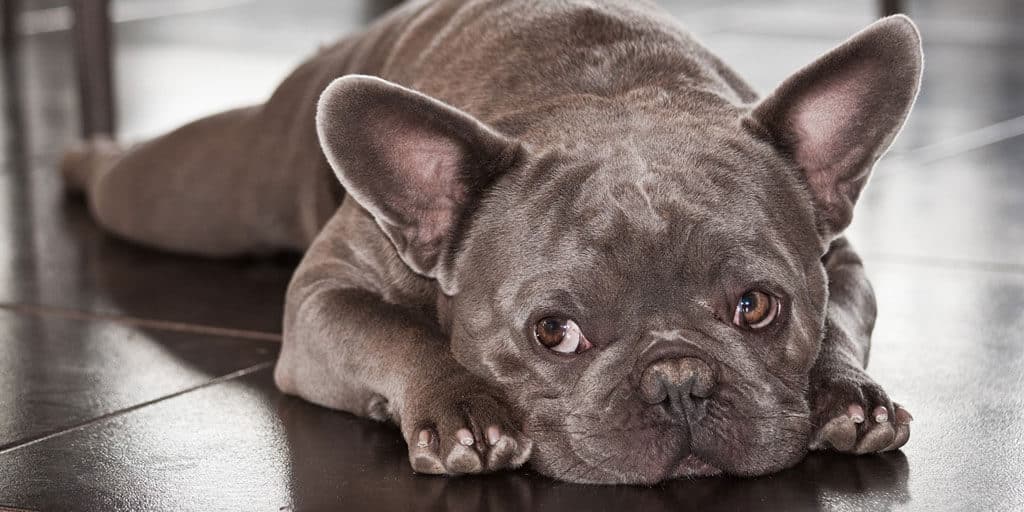
Blue French bulldogs share similar health challenges with the French Bulldog Family. With that, some health challenges are associated with their “blue” colouration.
Responsible breeding practices can mitigate some of these issues. Here are common health challenges faced by Blue French Bulldogs:
1. Skin Issues
Blue French Bulldogs, due to their dilute colouration, may be more prone to certain skin issues, such as allergies and sensitivities.
Regular grooming and proper care of their skin can help address and prevent these problems.
2. Colour-Linked Coat and Eye Issues
The dilution gene responsible for the blue colouration in French Bulldogs can be associated with coat and eye issues.
Blue Frenchies may have a higher likelihood of having skin and coat problems, as well as eye conditions.
Regular veterinary check-ups are essential to monitor and address any emerging health concerns.
3. Deafness
Some studies suggest a correlation between coat colour genetics and congenital deafness in dogs.
While not all blue French Bulldogs will be affected, there is an increased risk.
Responsible breeders conduct hearing tests on their puppies to identify any hearing impairments early on.
4. Breathing Difficulties (Brachycephalic Issues)
French Bulldogs, in general, are a brachycephalic breed, meaning they have short noses and flat faces.
This can lead to breathing difficulties, especially in hot or humid weather.
Blue French Bulldogs may be equally susceptible to respiratory issues, so it’s crucial to avoid activities that could cause overheating.
5. Genetic Disorders
The popularity of specific coat colours, including blue, has led to irresponsible breeding practices in some cases.
Unethical breeding can contribute to the expression of genetic disorders.
It’s crucial to choose a reputable breeder who prioritizes the health and well-being of the dogs.
7. Joint and Spinal Issues
French Bulldogs, including Blue Frenchies, may be prone to joint and spinal issues. This is partly due to their compact build.
Maintaining a healthy weight, providing joint supplements as recommended by a veterinarian, and avoiding activities that put strain on their joints can help manage these concerns.
Although the potential for these health challenges exists, it can also be mitigated by ethical and responsible breeding.
Related: What is a Mini Cow? Care Tips, Price, How to Get a Mini Cow
How To Care For The Blue French Bulldog
The following are ways to care for the blue French bulldog;
- Regular Veterinary Check-ups
- Balanced Diet
- Exercise
- Avoid Overheating
- Dental Care
- Regular Grooming
- Training and Socialization
- Health Insurance
- Avoid Unethical Breeding
All these are proven ways that would help care for your blue French bulldog.
See Related Posts
- Can Dogs Have Honey? Important Facts to Know
- Popular Nigerian Dogs and Their Strange Uses
- Top 15 Smart Animals in the World You Should Know
Conclusion
Have you decided to get a blue Frenchie yet? Dogs are awesome pets to have in the home. Blue French Bulldogs are even more awesome pets.
They conceptualize the sort of animals you’d want in the home to give you a cozy feeling. The blue-in-blue Frenchie exudes warmth, calmness, and blues.
Frequently Asked Questions (FAQs)
1. How much is a blue French bulldog?
On average, the cost of a blue French bulldog can range from $3,000 to $10,000 or more. It’s important to remember that a high price tag does not always guarantee a healthy or well-bred dog.
2. How rare is a blue French bulldog?
The Blue French Bulldog is one of the rarest colours. For that reason alone, people pay very high prices for them. There is usually a waiting list for blue ( aren’t so much blue as grey) puppies.
3. How much do blue French Bulldogs weigh?
Adult French bulldogs should weigh between 20-28 pounds. Males tend to weigh more than females.
4. What’s the most expensive French bulldog?
Isabella Frenchies – $30,000. Isabelle Frenchies are considered to be the rarest type of French Bulldog.
Merle Frenchies – $20,000.
Sable French Bulldogs – $10,000.
Blue Fawn Frenchies – $10,000.
